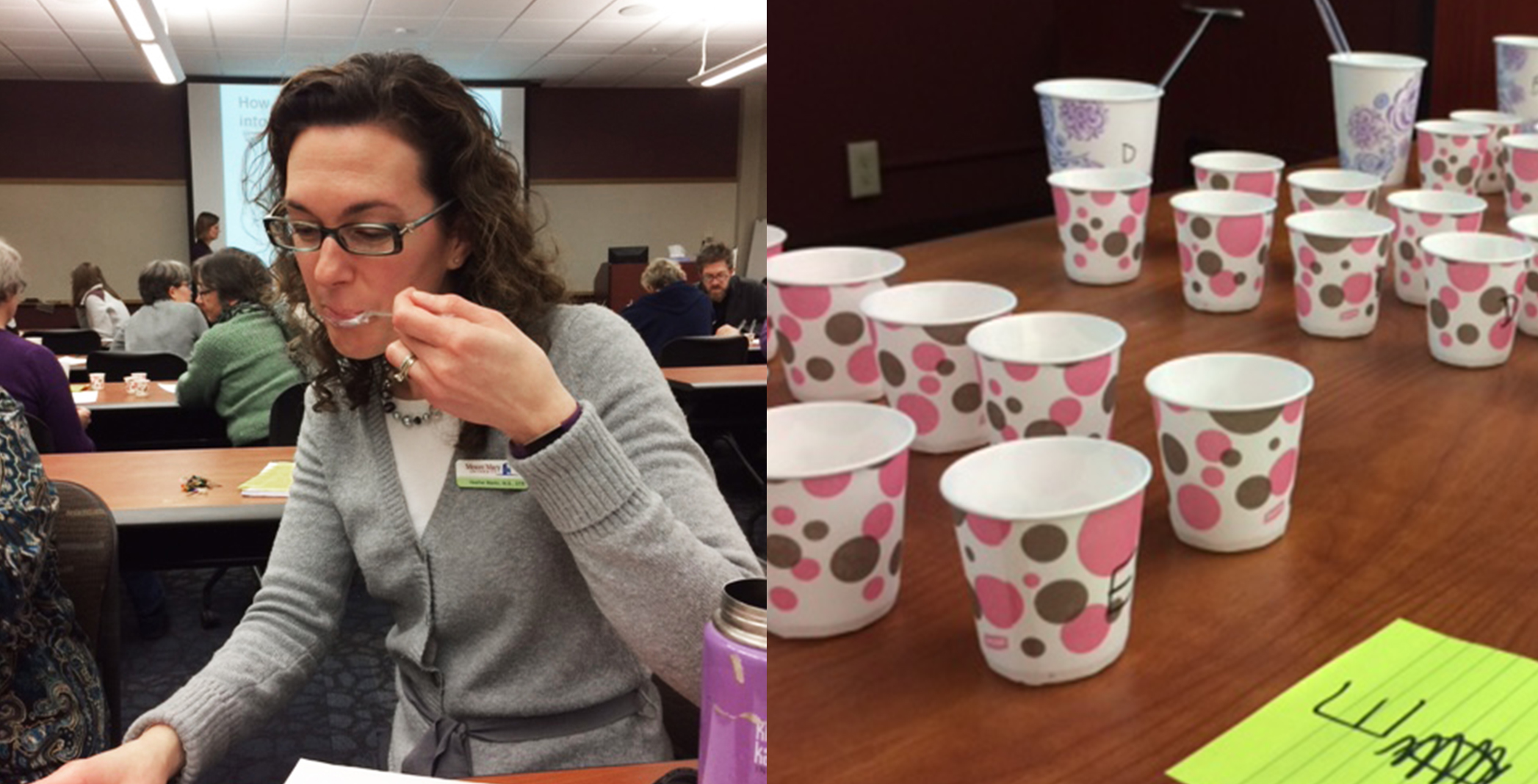Professors encourage DIY science labs
Pair believes creativity in the science is cultivated through experimentation

Posted on July 6, 2017
Is science a creative pursuit? To help students understand the connection between science and creativity, two professors at Mount Mary are foregoing conventional lab projects, in which students follow directions and get anticipated results, in favor of student-created experiments.
These experimental design labs encourage free-range thought and provide students with the opportunity to make claims and test hypotheses, even if they fail.
“We tell students that science is a creative endeavor, but they don’t always recognize the creative pursuit they are undertaking,” said Lynn Diener, chair of the University’s Sciences department.
Rethinking biology labs
To prove their point, Diener and fellow biology professor Terri Holzen have restructured the university’s human physiology course, Bio 212, to embrace the University’s creative campus initiative, a push to integrate creative attributes into all disciplines.
The creative attributes that are taught University-wide as part of the Creative Campus initiative are agility, experimentation, imagination, open-mindedness and the ability to navigate complexity.
“People associate creativity with art, literature and design; yet every scientist knows that scientists create new knowledge and that the scientific process is highly innovative,” said Holzen.
In her opinion, creativity is better defined as the ability to think beyond established realms or limitations.
Bio 212 is a foundational course, is required for occupational therapy, dietetics, pre-nursing and other science majors. The labs students were expected to participate in were predetermined, like following a recipe. Holzen and Diener called them “cookbook labs.”
In those old cookbook-style labs, students would learn principles by simply following directions. An experiment for learning diffusion and osmosis required a setup so complex that it obstructed the learning taking place. Students would fill segments of tubing with glucose and starch solutions, place them in cups of iodine solution and see whether the solution in the tubing diffused into the iodine solution. The margin for error was great.
“This experiment was rarely successful,” Holzen said. “The experimental setup was quite complicated and the tubing would leak.”
The instructors shifted the focus of this experiment and turned it into a game that involves soaking potatoes in various concentrations of salt water. The saltier the water, the greater the weight loss of the potato. Working in teams, the students now hold contests to see who can apply this principle to make their potato gain the most weight.
Increasing critical thinking
Changing the paradigm now requires students to formulate a question, create an experiment and test their idea.
An example of a totally open-ended experiment illustrating this process involves a taste lab in which students are given samples of water with various types of sweeteners and diagrams of their chemical structures, then asked to create an experiment. They are given no test parameters at all.
Although they are working with common kitchen ingredients – sugar, asparatame (Equal), sucralose (Splenda), saccharin (Sweet ‘N Low) and stevia (Truvia) – this is all lab, no cookbook.
They are given the freedom to develop a hypothesis and conduct testing. Sometimes these types of experiments are successful and sometimes they are not. And that is precisely the point.
The conventional way of conducting labs that produce an anticipated result “gave students a skewed idea of how science really works,” Holzen said.
In another lab designed to test a physiological response to a physical stress – what happens when a person’s hand is plunged into a bowl of ice water – their challenge is to find ways to minimize that stress.
Student attempts to minimize the shock to the system have ranged from having subjects engage in laughter, meditation, listening to music, coloring and – Diener’s favorite – watching cat videos.
If students don’t get the results they expect, instructors help them rethink the notion of failure.
“You always learn a lot from what doesn’t work,” Holzen said.
By having to help students reconsider their notions of risk, success and failure, the instructors said they themselves have learned that students need extra support as they navigate the uncertainties in science that they now encounter.
“We learned students need reassurance that it’s OK to make a mistake,” Holzen said.
Expanding national awareness
Diener and Holzen presented their findings last spring at the National Science Teachers Association (NSTA) Conference and they authored a commentary about their work in the February 2017 issue of NSTA Reports. They explained these case studies and detailed how lab assessments now incorporate a creativity-based rubric for grading.
They also presented their findings to a multidisciplinary group of faculty at a university-wide teaching session.
“It’s important to let others know what Mount Mary is doing with creative campus in the classroom,” Diener said.
The NASTA report is titled “Empower Science Students to Recognize, Embrace Creativity.”
See Mount Mary’s biology program.



